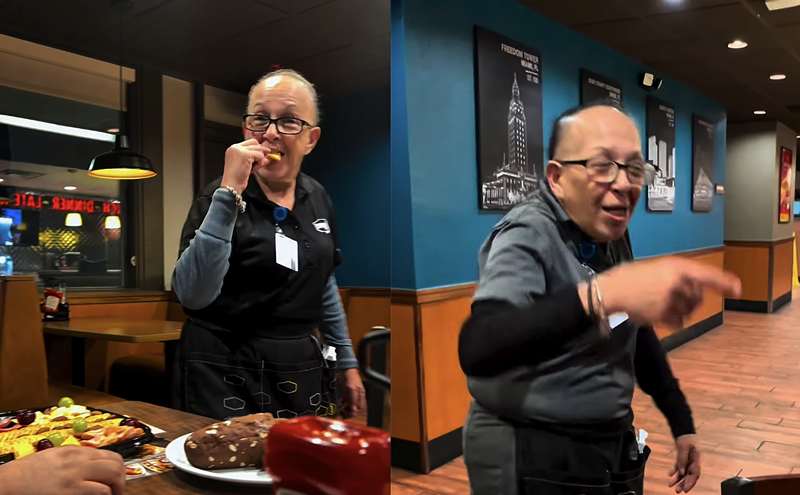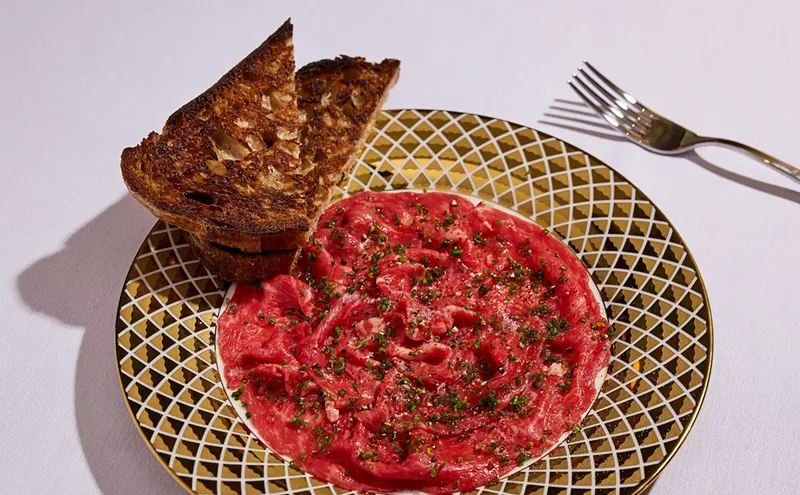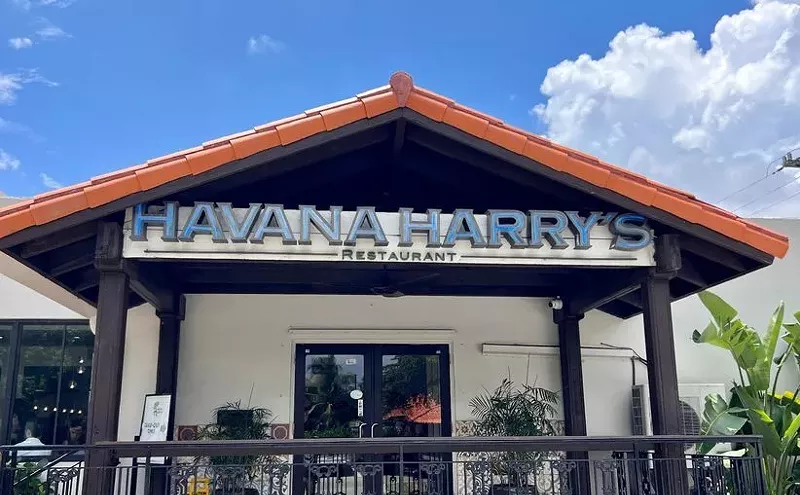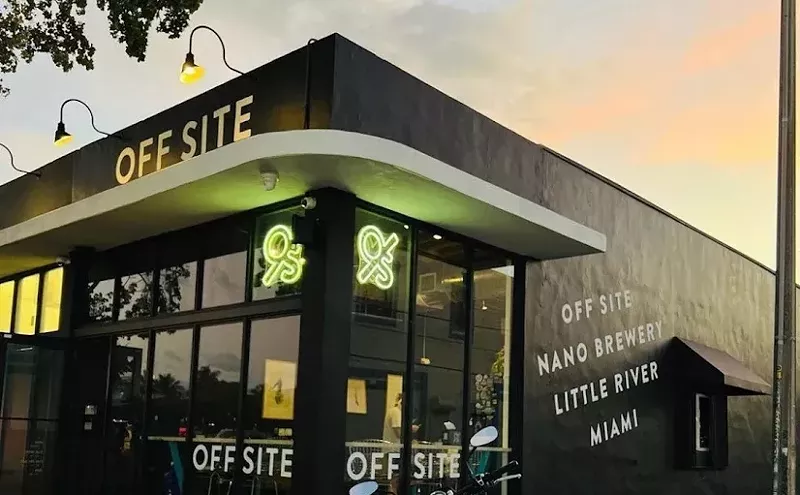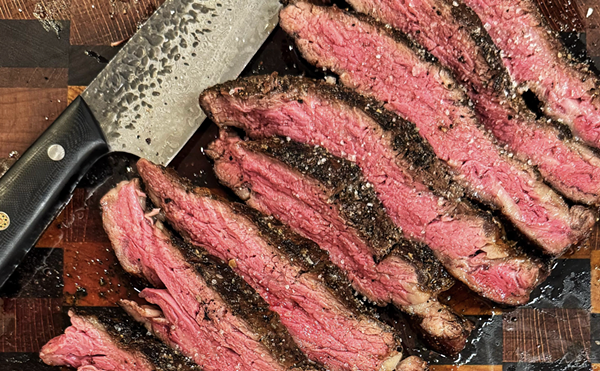Like here in South Florida, where fake, PR-created chefs -- I mean, “chefs” -- have been known to apply tropical fruits and Latin root vegetables willy-nilly to dishes with long menu descriptions and no rationale for existing. Their mantra is not “Quality of ingredients comes first” but “You can always cover it with mojo or mango sauce.” Original mango-gangers, and you know who you are, put down your pens; I'm not referring to those who have the experience and expertise to create fine cuisine using these fruits and roots, just pointing out that we only have a handful. Kris Wessel, chef/proprietor of Liaison, marches to his own New American beat, one that eschews Latin/Caribbean rhythms in favor of the flavors of France and New Orleans while using local ingredients. Call his food what you will, but label Wessel the real deal and one of the most talented chefs to hit town since that first elite group.
Liaison opened in June in a restored 1920s building on the corner of Española Way and Drexel Avenue. The passersby that can be observed through the dining room's arched windows and open French doors aren't quite as colorful as those on Bourbon Street, but they provide just about the only color, other than the food, that you'll encounter here: The walls, banquettes, and floor are gray with black trim; the high ceilings, drapes, table linens, and plates are white; elongated lampshades suspended from the ceiling are off-white; and the chairs are black, sleekly styled, and not particularly comfortable. Black-and-white photos hang here and there. The décor is colorless, yes, but nonetheless breezy and lovely. The same scheme runs through a separate bar area, which offers Big Easy snacks such as po'boys and gumbo, along with traditional Dixie drinks like mint julep.
The food, like the room, is minimalist, and connected to the earth in a refined manner. Soft home-baked bread, wheaty and naturally leavened, arrives in a quaintly tarnished pewter bowl, a smaller piece of pewter holding the butter, a delicate yellow flower in a small pewter vase. Herbs are grown on premises and so are vegetables, though the summer heat has decimated all but the corn, eggplant, and hot peppers; the fall harvest looks more promising. Through the open kitchen we can see the “Executive Cookaholic,” as Wessel is referred to on the menu, standing over the stove and flipping a pan of shrimp. He hails from New Orleans but is no stranger to the Miami restaurant scene, having formerly been chef de cuisine at the first Mark's Place and original partner of Paninoteca. Currently he is sweating.
It's a sure sign of arrogance when new restaurants open their doors and assume they have the right to charge the same money as finer, more established places, yet that's just what most South Beach eateries do. Wessel wisely has begun with moderate prices. Oyster andouille gumbo, with a glorious filé kick, is $5.95; an appetizer of orange-cured duck with litchi and white lentils just $6.25. The menu shifts slightly with each daily printing, but usually includes seven or eight starters: one soup, a couple of salads, and after that any number of items, from a wedge of French cheese and crisp red onions, to steamed whole artichoke in savory broth, to a crisply fried petit rouget with a generous dab of real, honest-to-goodness rouille, not saffron-garlic infused Hellmann's. The rouget, white-fleshed and firm, is garnished with a lemon wedge and a quartet of caperberries (capers the size of small olives) tucked into a bright green cluster of yellow-flowered herb. The presentation, like the fish, is fresh and pure.
On the next visit the same treatment was afforded Haulover “sardines”; actually there's only one, but it's a good one, and when butterflied and fried, is pretty much the size of a large sardine can. The signature starter, one that anchors the menu each night, is Big Easy barbecue shrimp: seven succulent crustaceans bathed in a full-bodied homemade Worcestershire sauce reduced with shrimp stock and bits of onions, celery, garlic, lemon, and black pepper, then finished with a dab of butter -- a classic New Orleans dish beautifully prepared.
There are the same limited number of main courses as starters, which allows for individual, inventive, and seasonal sides: pan-seared skirt steak with asparagus and wheatberries; chicken with summer vegetables and eggplant soufflé; New York strip with tomatoes and Bethmale (a French cheese that tastes like a stinky fontina) potatoes; and ruby-red roast leg of lamb with spinach, darkly caramelized Reblochon (a double cream cheese) gratin, and a potently smoky sauce that tastefully tugs at the lamb's assertive flavor. Half-inch disks of medium-rare pork tenderloin also are accented nicely, a slight lavender-honey sweetness seared onto the crusts of each slice. Wild rice, fresh figs, a thin sauce of pan juices with a hint of honey, and snippets of rosemary round out the dish in a spry manner.
Louisiana redfish, practically hooked into extinction because of the blackened craze of the 1980s, forgoes that treatment for a buttery sauté that gently complements the heavy white flakes of the fish. Toasted rice is a perfect foil, a sly twist on New Orleans pecan rice. Spaghetti strands of zucchini, usually bland and watery, are nicely seasoned, and the horseradish in the “horseradish sauce” hardly registers (just as well, as the mild wine sauce works fine). Grouper braised in sauvignon-leek broth with butter lettuce and roasted potatoes -- oops -- they forgot to bring those. The potatoes arrived a few minutes later, without our asking, with an apology from the waiter. They were cooked just right.
Dinner, after a proper interlude, slides seamlessly into dessert, as Valerie Paz's clean creations play to a similarly simple but striking tune as the food. Plum and hazelnut composition is the most ambitious and delicious: A circular base of hazelnut cake topped with the same size disk of tart-sweet plum ice cream and crowned by two battered and fried plum halves. A plum sauce spiked with dessert wine was pooled on the plate. Five textures, three temperatures, and innumerably subtle shades of tart, sweet, creamy, nutty, and fruity tastes in one dessert -- yet it's just cake, ice cream, and plum. Other homemade ice creams and sorbets also are available, like chicory coffee and an intense, brownielike chocolate-pecan made with deeply bittersweet, obviously top-quality chocolate. Another winner: Esther's mango pie, with soft flaky crust, moist mango custard, and fresh whipped cream. Mangoes and plum make great sense, as both are in season now. For that matter so are all the foods on this menu.
Because of a strategically quiet opening and general sluggishness of season, Liaison is operating with a somewhat skeletal crew. No problem during our visits, but if favorable reviews and positive word of mouth should suddenly fill the seats, I fear they'll be hard pressed to keep up the quality of food and service. Are Wessel's management skills as stellar as his cuisine? We'll see. Meanwhile Liaison demonstrates in compelling and delicious fashion just how much more “less” can really be.



